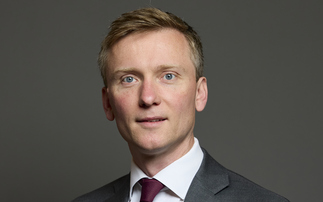Professional Pensions spoke to leading independent trustees to understand how schemes are approaching the de-risking process and what effects insurer innovation and capacity is having on journey plans.
In this interview, conducted in March 2020, PP spoke to Ian Pittaway, senior partner at Sackers and chairman of ITL.
PP: What factors are posing the greatest risks to DB schemes' capacity to pay benefits?
Covenant risk is the main one. As long as the employer keeps going and is able to fund those schemes, then they will pay out the benefits in full. But if at any point the employer fails and goes bust, then the scheme goes into the Pension Protection Fund or insures benefits. That's the one risk you can't get round.
Whereas, with investment performance, even the performance of the stock market because of COVID-19… is a short-term thing in the life of a pension scheme. Market movements, whether they are interest rates or stock market movements, in the end they're noise. It's the failure of the plan sponsor that is the most important thing and should keep people awake at night.
PP: What would you say the long-term de-risking objectives are for the schemes you work with?
There are two objectives really: one, to get to self-sufficiency, with very low reliance on the employer covenant. That probably wouldn't be a sufficiently high funding level to be able to buy out the benefits with an annuity provider. Once you get there, you can tick over with a limited amount of investment return and maybe 3-5 years later you can get to a point where you can then buy out and wind up the whole scheme and secure the benefits in full.
PP: How are your schemes navigating from their current position towards buyout?
Firstly, liability driven investing (LDI) - matching liabilities, hedging inflation and interest rate risk. Also, encouraging employers to pay more into schemes. Thirdly, having a long-term journey plan: an objective of, for example, to get to self-sufficiency within a period of 10 years
Having a dynamic long-term journey plan is an important component - if you are running behind, you might want more contributions from the employer. If you're running ahead you can decide how to calibrate it slightly differently.
It's a bit like travelling to Edinburgh. How long do we think it's going to take? Perhaps 24 hours. Which route are we going to take? Are we going to take the motorway and go a bit faster or go a bit slower and take less risk? It's that combination of things. If we find that the motorway is clear and we get ahead of ourselves on our journey to Edinburgh, maybe let's not take the risk of going in the fast lane, let's go onto an A-road and we can now still get there at our arrival time but we can go a bit slower, a bit safer.
There is no point in saying, ‘we want to get to this place in 10 years' time' if you are running behind and you need more money from the employer. It needs to be dynamic.
PP: What is your perception of the level of knowledge and understanding among trustees about the options available for de-risking?
Some inexperienced lay trustees probably don't really ‘get' LDI or buy-in or dynamic de-risking. It's a bit beyond typically where they would be. But there are some exceptions to that, so there are some schemes that have had member-nominated directors in place for 10 years and might have been on investment committees, training courses or done some de-risking.
As a general rule, though, there is quite a knowledge and experience gap between professional trustees and lay trustees. The worst situation is a smaller scheme that can't afford a professional trustee, can't afford decent advisers, and can't afford the best investment products. It is going to struggle and the trustees probably won't even be thinking about de-risking when they should be because no one is raising it, and their governance processes would be sub-standard.
Consolidation is something trustees may not be aware of, but an option like Clara or the Pension SuperFund is particularly designed for schemes like these because they can get access to investment products and a greater level of expertise and advice, and together they have buying power that they couldn't get individually.
It does depend on people within that small scheme realising that Clara or the SuperFund could be a better home for them. The trustees probably like doing what they're doing and it's unlikely to be raised by any of their advisers or actuaries to give up their fees.
It will happen, but it's not going to come from the trustees or their advisers. It's generally going to come from somebody turning up and saying that maybe there is a better way to run the scheme.






